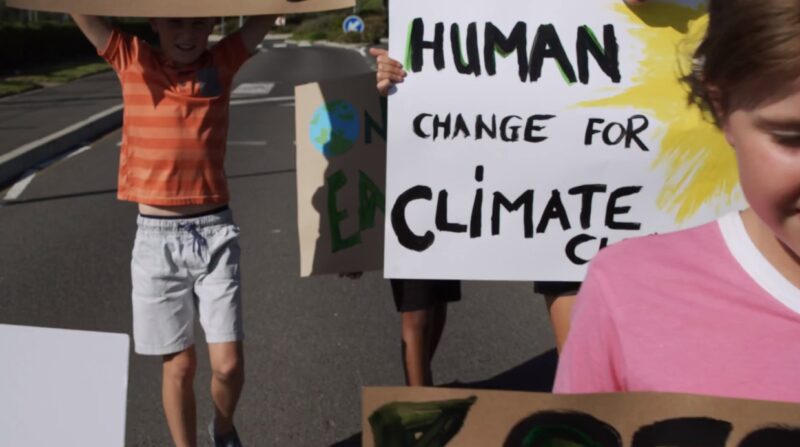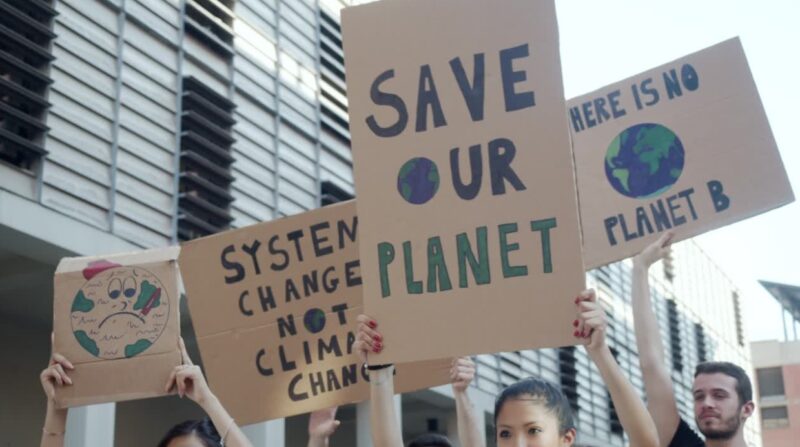In 2016, I had the privilege of witnessing a documentary that left an indelible mark on my perspective of the world. “Before the Flood,” a groundbreaking film produced by Fisher Stevens and featuring the passionate voice of Leonardo DiCaprio, fearlessly delved into the daunting realm of climate change.
Having immersed myself in this powerful documentary, I found myself captivated by the raw honesty and urgency that emanated from the screen, as if the dire state of our planet was laid bare before my eyes. I felt compelled to embark on a deeper exploration
Through this analysis, I seek to shed light on the powerful themes woven throughout the documentary, urging us all to reflect on our role in shaping the future of our planet.
Leonardo DiCaprio’s Environmental Journey:
One cannot discuss “Before the Flood” without discussing its messenger, Leonardo DiCaprio. A UN Messenger of Peace, DiCaprio dons the hat of an advocate in the film. He delves into the frontline of climate change, speaking to world leaders, scientists, and individuals affected by environmental degradation, and humanizes a global crisis often perceived as abstract.
DiCaprio’s personal connection to the environmental cause is deeply rooted. Throughout the film, he reflects on his childhood, reminiscing about his interest in the natural world and the impact an artwork “The Garden of Earthly Delights” had on him.
In his quest for truth, he also confronts the disinformation spread by some influential figures, a topic further explored in our article on the top climate deniers.
This narrative strategy by the film’s creators allows the audience to connect
with the issue on a personal level, adding a layer of emotional depth.
As he journeys through the documentary, DiCaprio’s role oscillates between a student and a teacher. His genuine curiosity and eagerness to learn make the complex climate concepts accessible to audiences, while his celebrity status ensures the message reaches far and wide.
He encapsulates the role of an ‘everyman’, becoming the eyes and ears of the audience on this perilous journey.
The Global Climate Crisis:
“Before the Flood” paints a vivid picture of the urgency of climate change. It begins with the explanation of the Anthropocene era, marking a period where human activities started to have a significant global impact on Earth’s climate and ecosystems. By setting this premise, it showcases how humans have triggered an environmental catastrophe.
The film’s portrayal of the global impact and consequences of climate change is hard-hitting. It takes us from the melting glaciers of the Arctic to the rising seas threatening the existence of Pacific islands, showcasing the stark and undeniable reality of climate change. Each location visited and story told emphasizes the existential threat that the crisis presents.
What sets “Before the Flood” apart is its ability to communicate the gravity of climate change effectively. Through compelling visuals and expert testimonies, it translates scientific data into a language that resonates with audiences. Its purpose is not to create fear, but to convey the urgency for change, and in this aspect, it succeeds remarkably.
Eye-Opening Expeditions:
Throughout the documentary, audiences are taken on a global journey to witness the devastating impacts of climate change firsthand. From the rapidly melting polar ice caps to the burning forests in Indonesia, the visual narrative grips viewers, offering an immersive experience of environmental devastation.
There is a power in the visual medium that “Before the Flood” taps into effectively.
Images of once thriving glacial regions now turned into expanses of water, the ashes of cleared and burned forests, and the teary-eyed inhabitants of climate-threatened regions all serve to evoke an emotional response. The documentary understands that to spur people into action, it must first make them feel.
The expeditionary approach adopted by the documentary also ensures a broad scope of understanding. It shows the correlation of environmental issues across the globe. It elucidates how our actions in one part of the world can have devastating effects in another, emphasizing the global nature of the crisis.
Personal Stories and Testimonies:
In a clever storytelling move, the film doesn’t only rely on data and facts. It brings climate change to a human level by highlighting personal narratives, demonstrating how environmental issues directly impact communities. It shows the viewer that climate change isn’t a distant problem but one that’s causing suffering here and now.
These personal stories are impactful because they add a human face to the crisis. From a villager in India dealing with floods to a farmer in America experiencing unpredictable weather patterns, these narratives elicit empathy. They make the abstract threat of climate change concrete, thus underlining the need for action.
Moreover, these narratives serve as a powerful tool for raising environmental awareness. They help to break the inertia and apathy that often accompany discussions about climate change, by providing relatable and tangible stories. Through personal testimonials, “Before the Flood” manages to move beyond statistics and speak directly to the viewer’s emotions.
Political Challenges and Policy Implications:
The movie doesn’t shy away from the political landscape surrounding climate change. It navigates through intricate climate politics, exploring how political agendas can either hamper or promote climate action.
DiCaprio’s conversations with world leaders bring a new dimension to the film, as they delve into the responsibility of the political class in combating the crisis.
The film also explores the influence of corporate lobbying on environmental policies. It highlights how short-term economic interests are often prioritized over the long-term wellbeing of the planet, causing a roadblock in the path towards a sustainable future. This critique of policy-making underscores the need for robust political will in addressing climate change.
Despite these challenges, “Before the Flood” also shines a light on policy opportunities for change. It champions the Paris Agreement and renewable energy subsidies as essential components of a climate-friendly policy landscape. The documentary aims to motivate viewers to demand more climate-conscious policies from their leaders.
Innovative Solutions and Technologies:
Amidst the bleak scenarios painted by the documentary, the film also highlights a beacon of hope: innovation. It showcases the potentials of green technology and renewable energy as viable solutions to the climate crisis. The film takes the audience on a journey from the wind turbines of Denmark to the solar fields of China, illustrating the world’s capacity for transformation.
But the documentary doesn’t just limit the conversation to the technology itself. It examines the economic and social implications of these solutions, scrutinizing their feasibility and scalability. It also underscores the significance of governmental support in fostering a favorable environment for these green alternatives.
“Before the Flood” also emphasizes that while technology offers a way forward, it’s not a silver bullet. Technological innovations need to be complemented by broader systemic changes, such as policy adjustments, economic incentives, and cultural shifts towards sustainability. The documentary thus presents a balanced view of the role of technology in climate action.
The Role of Corporations and Accountability:

This film leaves no stone unturned when it comes to exploring the various dimensions of the climate crisis. It scrutinizes the role of corporations in environmental degradation, questioning the practices of industries like fossil fuels and palm oil. Furthermore, it effectively exposes the destructive behaviors of these corporations, igniting discussions about corporate responsibility.
The documentary doesn’t merely critique corporations but highlights the need for transparency and accountability. It introduces the concept of carbon pricing as a mechanism to hold corporations accountable for their environmental footprints. It argues for a shift from profit-centered practices to sustainability-centered business models.
The documentary also emphasizes the power of consumers in driving corporate change. It encourages viewers to be conscious of their consumption patterns and the impacts they may have on the environment. The message is clear: corporations have a crucial role to play in environmental stewardship, but consumers also share this responsibility.
The Power of Awareness and Education:
One of the core themes in the film is the power of awareness and education. Throughout the film, DiCaprio acts as a conduit of information, facilitating the spread of knowledge about climate change. This role underscores the importance of awareness in catalyzing environmental action.
“Before the Flood” excels as an educational tool. It presents complex information about climate change in a digestible format, making it accessible to a broad audience. It incorporates scientific insights, expert testimonies, and striking visuals to enhance understanding and retention of the presented facts.
Moreover, the film exemplifies the role of public engagement in environmental action. It underscores the importance of collective understanding and dialogue in tackling climate change. It prompts viewers to question, learn, and discuss, fostering a community that’s informed and engaged in the fight against climate change.
Activism and Grassroots Movements:

This documentary is not just about the problems; it’s about the solutions too. It highlights the power of grassroots movements and activism in combating climate change. It showcases how individuals and communities worldwide are taking matters into their own hands, refusing to wait for governments and corporations to take action.
The film highlights instances of successful activism, like community-driven renewable energy projects and local conservation efforts. These stories serve as an inspiration, indicating that change is possible when people band together. It also dispels the notion that climate action is solely the responsibility of governments and corporations.
The film explores the environmental impact of individual lifestyle choices, from dietary habits to modes of transport. It urges viewers to reflect on their habits, prompting them to consider more sustainable alternatives.
It offers practical suggestions for reducing one’s carbon footprint, such as adopting a plant-based diet or reducing air travel. It calls on viewers to assume personal responsibility for the health of the planet.
By drawing attention to the impact of personal choices, “Before the Flood” invites viewers to become active participants in the climate solution. It reminds us that while the climate crisis is a systemic issue requiring large-scale solutions, our everyday choices can also make a difference.
The message is clear: individual responsibility is a powerful tool in the fight against climate change.
Media Influence and Communication:
“Before the Flood” recognizes the influential role of the media in shaping public perception of climate change. It critiques the media’s handling of the crisis, highlighting how false balance and misinformation can hinder public understanding and impede action.
The film itself serves as an effective example of the media’s potential to enlighten audiences about environmental issues. It shows that media, when leveraged appropriately, can be an invaluable tool in the fight against climate change.
In essence, “Before the Flood” emphasizes the need for accurate and engaging environmental reporting. It makes a case for responsible journalism that prioritizes factual information over sensationalism and bias. It underlines the media’s responsibility in fostering a well-informed and proactive public.
2020 was the hottest year in the global temperature record, going back 140 years. 2020 statistically tied with the previous record holder, 2016 – a year when El Niño, a cyclical climate pattern, gave temperatures an above average boost. pic.twitter.com/Ght03Sl2VQ
— NASA GISS (@NASAGISS) January 14, 2021
FAQs:
What are some global initiatives and movements that align with the message of “Before the Flood”?
“Before the Flood” aligns with initiatives such as the Paris Agreement, Fridays for Future, and Global Climate Strikes.
What are some of the environmental phenomena depicted in “Before the Flood”?
The film showcases environmental phenomena such as glacial retreats, deforestation, rising sea levels, and the impact on wildlife and ecosystems.
Are there any criticisms or controversies surrounding the film?
“Before the Flood” has faced some criticism and controversy, with some questioning its effectiveness, scientific accuracy, and potential political bias.
What steps can individuals take after watching “Before the Flood” to make a difference?
Individuals can take actions such as reducing energy consumption, supporting renewable energy initiatives, advocating for policy changes, and spreading awareness.
How has “Before the Flood” influenced viewers personally in their understanding and response to climate change?
The film has sparked personal reflections, motivated lifestyle changes, and inspired individuals to become more active in addressing climate change, both on individual and collective levels.
Conclusion:
“Before the Flood” is more than just a film; it’s a wake-up call. It pulls no punches in portraying the dire state of our planet, but it also instills a sense of hope and urgency for action. Through Leonardo DiCaprio’s journey, we witness the power of awareness, the importance of education, the potential of technology, and the strength of collective action.
The documentary serves as a stark reminder of the continued need for action and collaboration in addressing climate change. It calls for a concerted effort from governments, corporations, and individuals alike.
As we venture further into the era of climate crisis, this film remains a relevant and compelling guide, encouraging each one of us to play our part in ensuring a sustainable future for our planet.








